THE Northern Territory Cattlemen’s Association has kick-started a renewed national debate on cattle industry levies, after its members supported a resolution calling for a new 50c per head levy at its AGM in Darwin late last month.

How much would a 50c/head levy generate?
Department of Agriculture and Water data shows 11.8 million grassfed cattle transactions were recorded in 2017-18.
Based on that volume, a 50c/head levy would generate about $5.9 million a year, if all producers opted to pay it.
The NTCA says a new national levy is needed to strengthen industry representation, and to fund industry efforts to improve public awareness of the beef industry’s high sustainability and welfare standards, in the face of rising, high-profile vegan campaigns demonising meat production.
The NTCA’s view is that the new levy would be voluntary, in the sense it would have an ‘opt out’ clause allowing producers not to pay the levy if they chose.
It would be levied over and above the $5 per head compulsory cattle transaction levy producers currently pay on every head of cattle they sell, which funds industry research, marketing and support services.
The compulsory cattle transaction levy has stood at $5 per head since 2006.
Consumer Price Index movements over the past 13 years had reduced the value of the fixed rate levy by about 30 percent, Northern Australia Beef Research Council chair Lee Fitzpatrick told a MLA BeefUp forum last year.
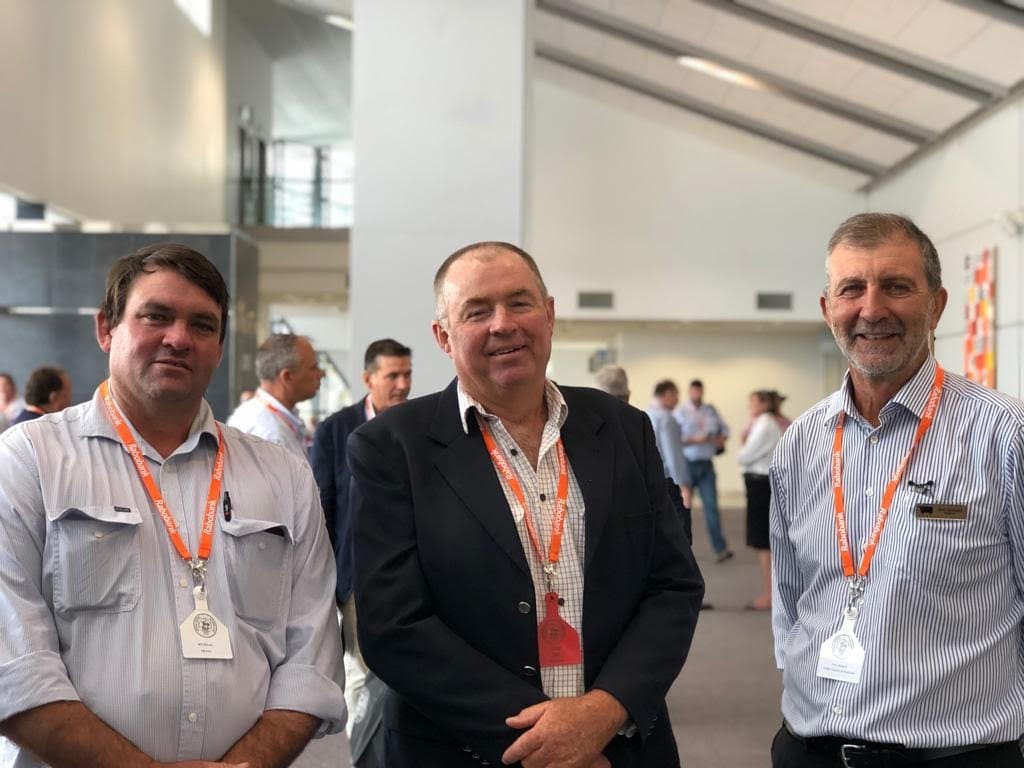
Agforce cattle council president Will Wilson, NTCA president Chris Nott and Cattle Council of Australia president Tony Hegarty at the NTCA conference in Darwin last month.
NTCA president Chris Nott told the association’s recent conference in Darwin that well-resourced animal activist campaigns had the potential to cause “irrational government interventions” in the beef industry, just like the Gillard Labor Government’s snap ban on live cattle exports to Indonesia in 2011, which caused massive disruption to the northern cattle trade.
Mr Nott said the industry “needed to pay for good people and fund good support structures” for its national organisations to be successful, and to get its message across to everyday Australians.
 A 50c/head levy would help to attract and pay for executives of significant quality and to maximise resources for advocacy and education, in line with an industry producing $11 billion of value a year, he told the conference.
A 50c/head levy would help to attract and pay for executives of significant quality and to maximise resources for advocacy and education, in line with an industry producing $11 billion of value a year, he told the conference.
Discussions Beef Central has had with a range of industry groups in the past week indicate varied levels of support for the NTCA’s concept.
But regardless of whether different groups specifically support the NTCA’s proposal or not, the NT industry’s front-foot move has certainly got the rest of the industry talking about levies and industry funding options once again.
Cattle Council of Australia said it welcomed the NTCA putting forward the suggestion for a sustainable, whole-of-industry funding plan to resource peak industry activities.
President Tony Hegarty said the council will now ask its other State-based members to also consider the NTCA’s proposal and other potential options.
“Cattle Council and its founding members have, over time, considered similar options but now with the headwinds facing our industry, an option like this should be progressed to better fund peak body advocacy, beyond what we are able to do with the transaction levy,” he said.
“For 40 years, Cattle Council has been funded by state farming organisations for the benefit of the whole industry, and a wider funding base would be a step in the right direction.
“The 50 cent-per-head levy may or may not be the only solution, however NTCA should be commended for showing leadership by raising the discussion.”
Victorian Farmers Federation livestock council president Leonard Vallance said it was “pleasant surprise” to see the level of commitment NTCA members had demonstrated to supporting the industry.
“I was pleasantly surprised to hear that a State had that sort of commitment and I thought it was a game changer in the agripolitical sense, in that this is 50c for lobbying and industry development as against giving MLA more money for R&D and marketing,” Mr Vallance told Beef Central.
“That is a completely different use of the money.
“The Northern Territory has done a really good job in showing a unified front, in being prepared to invest in Cattle Council and I think that is a really positive step.”
He said the VFF livestock council was “well aware of the toll inflation was taking” on the $5/head cattle levy since it was raised 13 years ago. “You can’t expect that to continue to provide a level of R&D that farmers need, and then of course you can always argue about how much you spend on marketing and industry systems and the like.”
The $5/head cattle levy was lower than the levy sheep producers paid in real terms. If the percentage-based levy currently applied to sheep was applied to cattle, it would equate to a cattle levy of about $8/head, he said.
One factor which could affect producer support for another levy in Victoria is the fact that producers in the State already pay another levy that producers in most other states do not.
Victorian producers pay a State-specific levy of 5 cents for every $20 of the sale price of every head of cattle they sell (equating to $2.50/head for a $1000 animal, capped at a maximum levy of $5/head), which goes to the State’s Cattle Compensation Fund. Currently holding in excess of $20 million, the fund serves as a form insurance for producers impacted by disease incursions, and also helps to subsidise the cost of NLIS tags for producers in the State and fund State-specific ‘industry-good’ research projects.
In Queensland, AgForce Cattle Council president Will Wilson said it was encouraging to see the level of unity shown by NT producers.
“I am in admiration that they can have so many people supporting this from the Alice Springs to the tip, and that they can open the conversation about solving the funding issues of our peaks and also of our key industry problems that keep popping up.
“I’d like to think we can get Queensland into a position of trust to open the conversation here, we represent a majority of the herd, but because we don’t have unity in Queensland it is hard to make movement toward that.
“Hopefully we can go forward and get these conversations out in the open, there are some really obvious outstanding issues that need funding and they’re integral parts of our clean green image that we need to protect, and I hope that my State can get behind AgForce if and when we form the need to increase or to fund the industry in an appropriate way.”
WA Farmers Livestock President David Slade said the WAFarmers Livestock Council had not yet canvassed the NTCA’s levy proposal concept but it would be discussed at its council meeting on May 12.
However he added that his personal view was that the cattle transaction levy “certainly is too low”, particularly compared to the sheep transaction levy.
NSW Farmers Cattle Committee chair Bill Stacey, a beef producer from Singleton, NSW, said NSW Farmers currently does not support an increase in the cattle transaction levy, or any of the levy being allocated to the peak industry council, Cattle Council of Australia.
He said NSW Farmers supported the current split of the $5/head levy between the National Residue Service (which receives 5.8pc or 29c from each $5/head levy paid), Animal Health Australia (which receives 2.6pc or 13c/head) and MLA (to which 73.2 percent ($3.66) is directed specifically for marketing purposes and 18.4pc (92c) for research and development).
“The industry is currently developing a strategic plan and from there it will detail the key actions for industry over the next 10 years,” Mr Stacey said.
“It would be prudent to ensure that industry has the sufficient funds at this point but not prior to the plan being finalised.
“NSW Farmers’ recognises the importance of funding for consumer tracking and ensuring public trust is maintained and would welcome the opportunity to have further input into developing public awareness campaigns about the industries animal welfare and environmental credentials.”
The Australian Beef Association CEO David Byard said “a full and thorough investigation” of where MLA funding goes is needed to determine whether extra funding for advertising campaigns could be found through rationalisaing and streamlining current funding applications.
Mr Byard said from his analysis of recent MLA annual reports marketing already appeared to be very well funded, with $90 million spent on red meat marketing last year.
He said he was “stunned to read” in financial summaries from MLA annual reports that MLA’s overall income rose from $181 million in 2013-14 to $205m in 2017, but then jumped by 39 percent in a single year to $272.5 million in 2018.
Government contributions to MLA totalled $46.7 million in 2014, rising to $52.1 million in 2017 and then by to $80.4 million in 2018, a single year increase of 54.3pc. The category denoted as “other” (believed to include private investment component in research through MDC projects) rose from $35.8 million 2014 to $47.2m in 2017 and then increased by 86.1pc to $85.7 million in 2018.
In releasing its annual report last year MLA attributed the significant year-on-year growth in overall revenue to increased private and Government contributions stemming from its efforts to leverage a greater share of available public funding for red meat research through the MLA Donor Company.
Mr Byard said it was important for levy payers to remember that in 2006 a similar call was made to increase the cattle transaction levy by $1.50/head to help advertise and promote beef and to stop falling consumption, which was approved (which lifted the levy to its current level of $5/head).
However he said Australian Bureau of Statistics figures show beef consumption in Australia has fallen from 40kg per person in 1998 to 23.8 kg now.
“Hardly a glowing endorsement of MLAs marketing efforts,” he said.
He also expressed concern that MLA as a service delivery company with a large producer-funded budget also provides more than half of the annual income of the producer’s peak council, the Cattle Council of Australia (CCA), through service delivery contracts.
“It is not too difficult to prosecute an argument that there is a massive conflict of interest and the potential for compromising CCA aims and responsibilities is not insignificant.”
He said the NTCA resolution also proposed directing funds from an increased levy to strengthening national industry representation to advocate for and progress the needs of beef producers, but said there were questions about whether that should be the Cattle Council of Australia.
“I am not sure a revamped CCA is best placed to receive those funds, or adequately represent producers and provide oversight on the significant funding of MLA.
“Yes, I agree with the NTCA we do need a review of the levy and we do need a strong well-funded peak council with the ability to control the MLA as a service provider.
“However, before we start dipping further into producers’ pockets, we need to ascertain and find answers to the questions.
“Is the current funding being correctly and appropriate utilised and achieving the gains needed? Are these opportunity rationalisations done in a transparent and accountable manner? Are there opportunities for rationalisation of current practices, projects and plans?
“Surely the government, on behalf taxpayers and producers, should be asking, if MLA is delivering best practice returns on investment and delivering what it purports to be doing.”

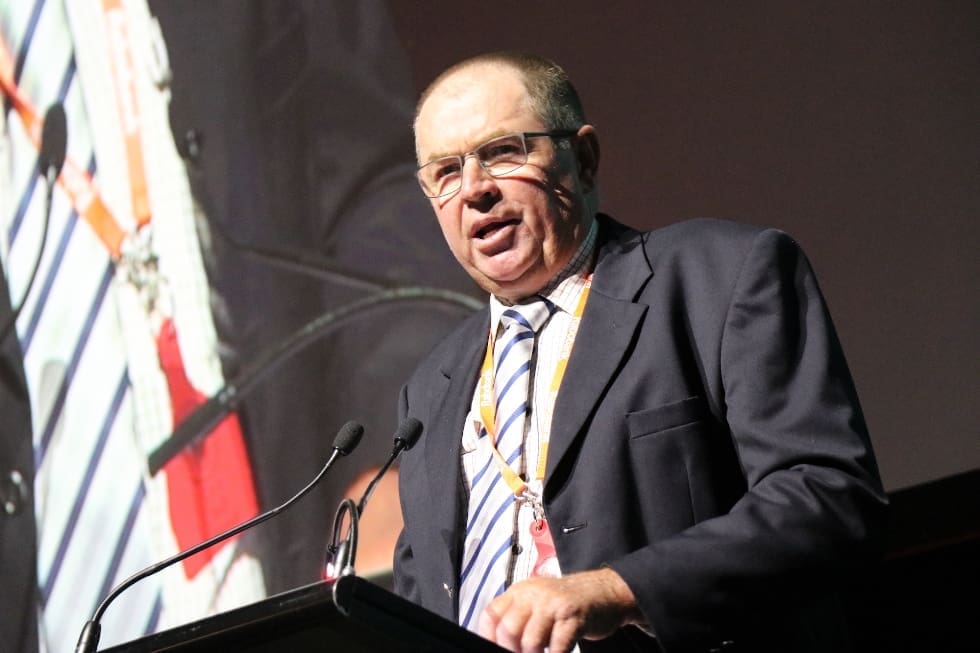
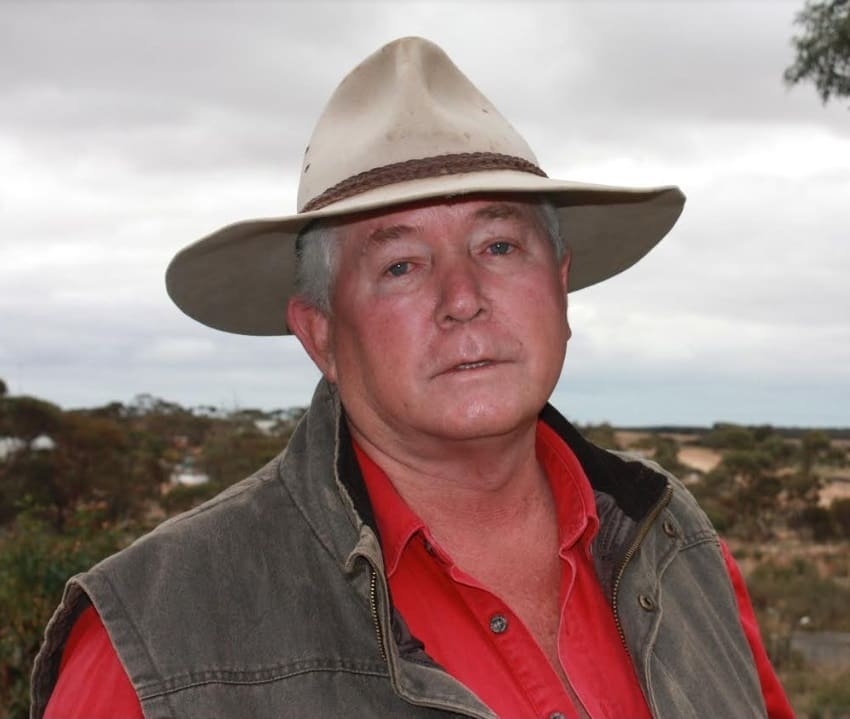
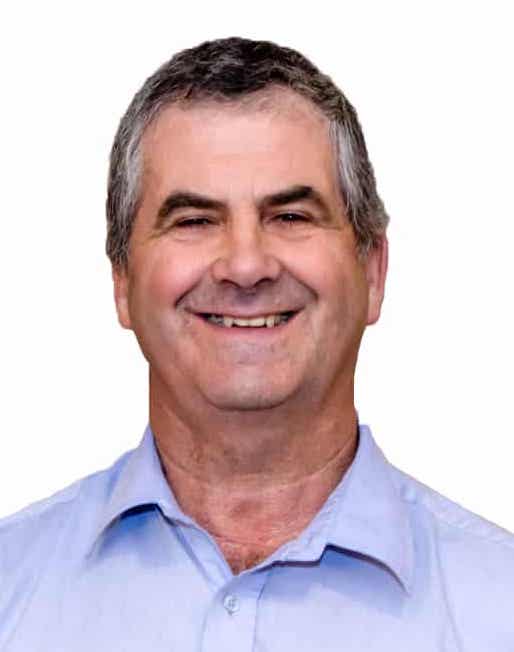
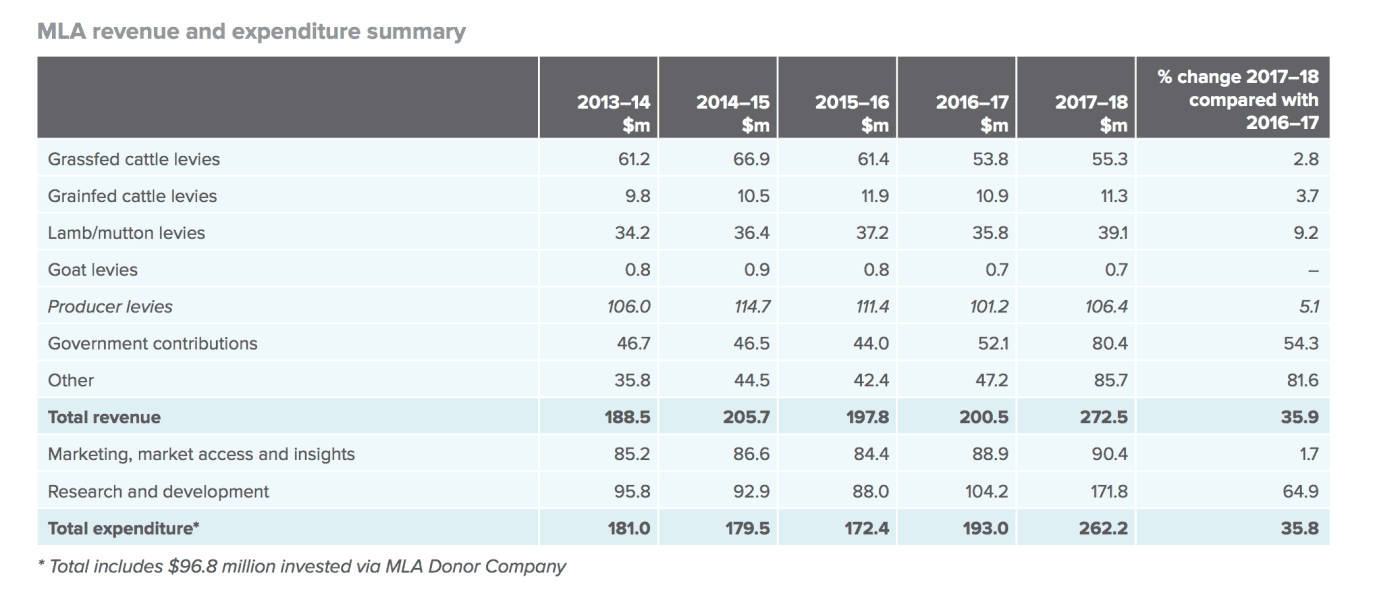
For years we have been asking why the millions of dollars of levies spent by the MLA has not achieved any positive outcomes by putting more money in producers’ pockets. we need to find answers to as to why , but when questions are asked we are never given appropriate answers.
Education in agriculture and specifically about beef in this instance is urgently needed for the Australian populace when we are faced with the UN plan to eliminate animal meat protein from the human diet
However a template as to exactly how these additional funds will be used and specifically who is in control of those funds would perhaps make the idea palatable. We need total transparency and of funds used.
The Cattle Transaction Levy is a tax collected by the Commonwealth and disbursed as they see fit.Borrowing some words from the late K Packer any private sector participant advocating an increase in tax should have “their heads read”.
I totally would not support an increase levy as there is enough money being spent by MLA with out producers input if every producer reads MLA annual report they would be dum founded the industry needs to be steam lined the board are spending millions dollars now with out a mayor input from producers around Australia we do the hard work producing top beef I would support a ACCC inquiry into MLA & CCA for more accountabilty
Whilst I applaud the NTCA for opening the discussion around the increased levy to combat the rise in activism across the nations beef and meat sectors, and also totally concurring with remarks made by Jock Douglas of CPA, I believe that far greater focus is required on the deterrent aspect of this issue.
If we as an industry go down this path then it is vital that we invite the national judicial system to walk with us so as to increase the penalties for such incursions. Without a substantial increase in fines and penalties to act as a deterrent raising levies cannot and will not do it alone.
The Queensland Government has raised the fine level to $672:75.
for those who choose to try and impose their beliefs and ideology on agricultural industries, this is nothing but a punitive effort on their behalf as a slap on the wrist fine such as this will not protect a billion dollar industry from this type of aggression and incursions.
Gulf Cattleman’s Association.
Typical John Wyld response, as a past chairman of CCA and MLA board member I would have expected nothing less. Yes he is correct where he suggests that 1976 was a high point with domestic disappearance, however typically he forgets the price crash of cattle in 2013/14 where the price of beef stayed at an all-time high and didn’t flow back to producers,is it possible that processing beef was a licence to print money,as export beef was selling at record highs. I presume this didn’t concern Mr. Wyld,could it possible unlike the 1970’s we have a supermarket duopoly selling a vast percentage of domestic beef.Surely we should never forget that the domestic market is our most valuable and critical market. Perhaps we should never forget that if problems arise on our export markets for whatever reason, the domestic market more crucial than ever.
Bill Stacey makes a good argument. Throwing more money at the issue will not fix it. Besides, $5.9m is not nearly enough. The responsibility lies within the industry. There is an opportunity now to improve our image, to present in simple terms, the changes we have made, techniques that have been adapted, methods of production that have been abolished, reasons why we value our industry so much including the livestock that are nurtured to extreme levels. The work has been and is currently been done and still being developed. These messages and need to be told and displayed in all types of forums, so that the wider community can understand. We cant rely on natural disasters to win over their interest. Over 80% of our product is exported, lets not forget that this message should be focused accordingly.
The levy we are currently paying should not be increased and should be applied on a sliding scale depending on what price is received per head. Why should those receiving poor prices be made to pay the same as those receiving top prices?
Thanks for your contribution David Byard and careful analysis of the facts. We support Tom Campbell and Grant Piper in calling for no increase in the levy, but a less wasteful approach in spending the levy MLA and others already receive. We also agree with John Wyld that the marketing dollars spent on domestic beef has little impact on the volume of sales.
In fact, it is the supply of beef that effects beef price movements. As John points out, when Japan closed its market in the late 1970s, there was a glut of beef hitting the domestic market and prices fell dramatically. This was an exceptional circumstance. However, as we are largely an exporter of beef, overseas demand for our product determines available supply into the domestic market. We are therefore a price taker for beef.
Marketing that promotes beef as a source of iron is needed, but unfortunately the recent offerings have had no effect at all on beef consumption. We would have been better off returning the dollars to the grass-fed cattle producer. There are so many other areas of MLA waste such as DEXA 150, biosecurity plans, re-accreditation of LPA and J-BAS. Where was CCA putting their foot on the neck of MLA to stop this waste? As David points out, their conflict of interest stops them from performing their responsibilities under the Red Meat MoU. Indeed CCA’s CEO told me CCA could not meet their weekly wage pays without the funds from the MLA projects they manage. And it would be laughable, if it were not so serious, but the projects they are running for MLA are on corporate governance.
We consider the transaction levy for grass-fed cattle producers should be reduced to $3.50 with a dollar returned to the grass-fed cattle producer to help fund the on farm costs of living with the continuing bureaucratic intrusion into our businesses.
The remaining 50 cents should be paid as a fee to the peak council to help fund their advocacy for our industry. However, as with Tom, we would not spend a cent on the current CCA. They continue to disappoint and have failed us on so many occasions. By the way, if the 50 cents for advocacy does get support, then the State Farming Organisations (SFOs) must surrender their ownership of CCA and turn it over to the grass-fed cattle producer levy payers in like manner to AWI.
SFOs are continuing to struggle to meet their payments to CCA. We understand in the west there were pink slips delivered to workers in a WA SFO saying they did not have the money to pay their people. Other SFOs had to reduce their annual payments to CCA surrendering their voting rights in the process. CCA are struggling to survive and have compromised their corporate governance. They have no right to continue to represent grass-fed cattle producers.
Australian Cattle Industry Council
NTCA has exposed the inbuilt failings in red meat industry structures and funding arrangements in its call for a 50 cent per head new special national levy. The current Red Meat MOU Review should present the strategies, structure and funding streams to overcome these failings in its final White Paper. In this regard Cattle Producers Australia has lodged a major submission in response to the Review Panel’s Green Paper which I have viewed. CPA holds that the flaws in the current red meat industry levy collection and expenditure arrangements would be rectified if each red meat industry sector adopted the current two company structure that presently applies to the processing and the live export sectors, yet does not apply to the grass-fed cattle production sector. CPA proposes that each red meat sector should have direct control over the expenditure of the levies paid by its members; and each red meat sector’s levy funded body would be able to commission independent policy development research for its own sector as well as commissioning whole of red meat supply chain research and service provision through MLA. If this was set in place a levy-paying cattle producers’ representative organisation could readily apply part of their funds already held, in the way that NTCA has identified, to ‘attract and pay for executives of significant quality, to maximise resources for advocacy and education, to improve public awareness and to counter activists’. It is noted that CPA holds as a fixed principle that the grass-fed cattle production sector should have a representative organisation which is directly elected by grass-fed cattle producer levy-payers and which has control over the levies they pay and the policies that impact on their industry.
We definitely do not need an increase to the livestock transaction levy we get nothing for the $5 we pay now with out giving more to MLA we need a biosecurity fund and take 50c out of the levy we now pay to fund it Cattle Council are more trouble than they worth
Tom Campbell
Taroom
Typical negative ABA comments. Since when has domestic consumption been the litmus test for how well the beef industry is going? If it is, then 1976 was our high point with domestic disapearance at 70 kgs per person, flooding the market, and cattle worth nothing and being shot!
I much prefer to look at at the price of cattle as a guide, and if the export market is dragging beef away from the domestic market because prices are better overseas, then that’s a good thing I would believe.
The NTCA 50c suggestion is worthy of serious consideration-congratulations to them.
No,levy does not need to increase, what is collected now needs to be spent more effectively. If it can’t be used effectively the levy should be reducred.